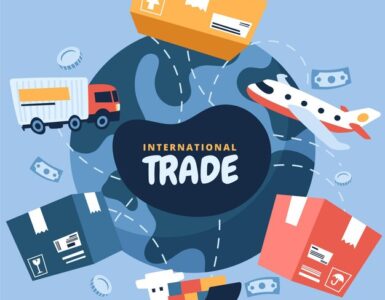
It’s been less than two years since I started my job at Shipping Solutions. I went to college thinking I wanted to be a doctor. I never knew I’d end up working for a software company. But it’s been incredible.
I’ve learned so much about international trade, importing and exporting regulations, and compliance. The best part is that this understanding allows me to appreciate just how useful the products and services we provide here at Shipping Solutions really are.
Here are my 10 favorite International Trade Blog articles to get you up-to-speed on export documentation and compliance.
Contents
- 1 1 – How to Succeed in Going Global (Infographic)
- 2 2 – A Summary of Government Agencies that Regulate U.S. Exports
- 3 3 – The Not-So-Sexy Checklist for Becoming a Successful Exporter
- 4 4 – Classifying Your Products for International Trade: HS, HTS and Schedule B Codes (Infographic)
- 5 5 – The Beginner’s Introduction to Incoterms
- 6 6 – Export Assistance: State, Federal and International Resources
- 7 7 – 20 Terms You Need to Know When Filing through AES
- 8 8 – Export Compliance: Understanding Restricted Party Screening
- 9 9 – What’s the Big Deal about Export Compliance Software?
- 10 10 – Your Company Needs an Export Management and Compliance Program (EMCP)
- 11 Bonus: The Beginner’s Guide to Export Forms (White Paper)
1 – How to Succeed in Going Global (Infographic)
Infographic highlighting what new exporters ought to keep in mind when planning their strategy. Great for visual learners.
2 – A Summary of Government Agencies that Regulate U.S. Exports
Description of the primary government agencies that regulate exports out of the United States. It is important to understand which agencies have jurisdiction over your goods, as this plays a role in determining if you need an export license.
3 – The Not-So-Sexy Checklist for Becoming a Successful Exporter
Nine key pieces of information to consider before you commit to exporting goods overseas.
4 – Classifying Your Products for International Trade: HS, HTS and Schedule B Codes (Infographic)
Infographic outlining ways that products are classified for international trade. Does a great job of clarifying the differences between similar yet distinct classification systems.
5 – The Beginner’s Introduction to Incoterms
An introduction to Incoterms, universally accepted international trade terms which outline who is responsible for each part of the transport of goods. I had heard the word Incoterms thrown around but it wasn’t until I read this article that I came to understand exactly what they are and why they are used.
6 – Export Assistance: State, Federal and International Resources
List of state, federal and international resources for exporters to receive assistance. I wrote this article myself and still reference it when I speak with people on the phone who are interested in learning more about exporting.
7 – 20 Terms You Need to Know When Filing through AES
A comprehensive list of terms related to filing the Electronic Export Information (EEI) through the Automated Export System (AES). Filing the EEI through AES may be a legal requirement, depending on the value of the shipment and the destination of the goods.
8 – Export Compliance: Understanding Restricted Party Screening
An introduction to restricted party screening (also called denied party screening), a key aspect of export compliance. This is important, as doing business with an individual or company on any of the government’s restricted party lists is prohibited and can lead to harsh fines and penalties.
9 – What’s the Big Deal about Export Compliance Software?
Highlights the benefits of using software to ensure your company stays compliant with trade regulations. Export compliance software has many advantages that more manual processes simply can’t match.
10 – Your Company Needs an Export Management and Compliance Program (EMCP)
Discusses the importance of having a written Export Management and Compliance Program (EMCP). An EMCP allows your company to establish a consistent approach to handling each and every export shipment and provides a framework that anyone can follow.
Bonus: The Beginner’s Guide to Export Forms (White Paper)
Description of documents commonly required when exporting, including details regarding the specific data elements needed on each form. Helpful for new and seasoned exporters alike.
While the article links above will help you get up to speed on various aspects of exporting and international trade, my final recommendation will help ensure you are creating the accurate documents you need to get your export shipments through customs and make sure you are complying with U.S. export regulations.
[“source=shippingsolutions”]





















































